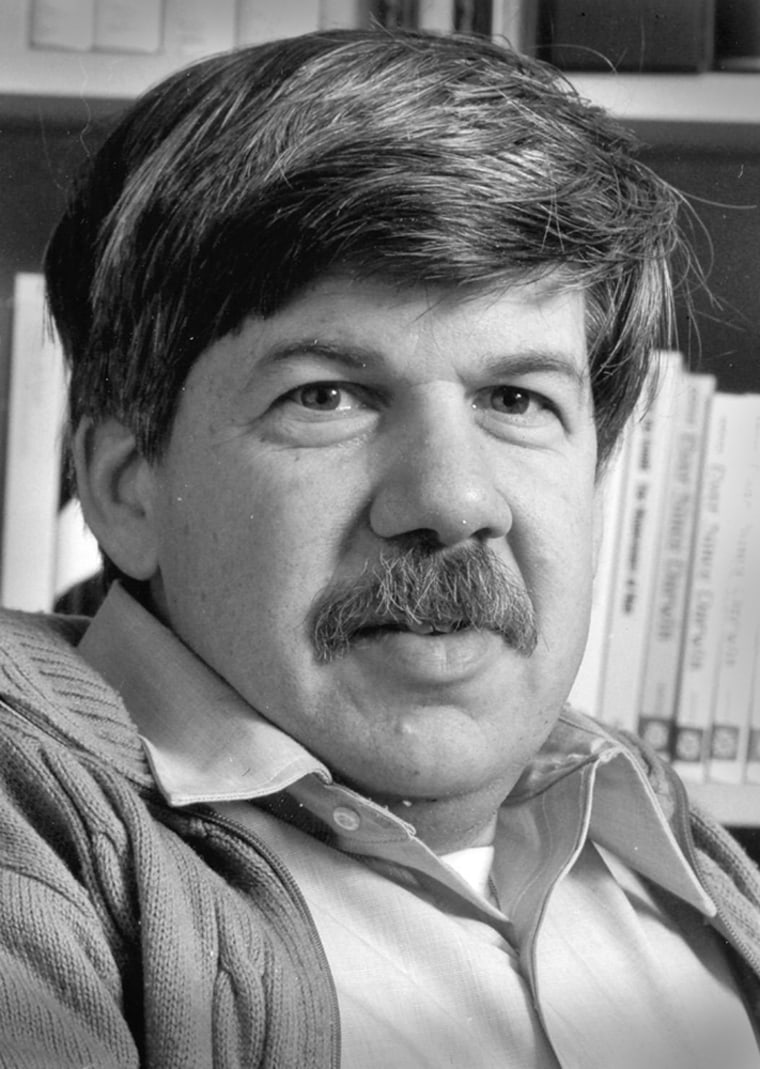The family of the late paleontologist and evolutionary scientist Stephen Jay Gould sued two Boston hospitals and three doctors Friday, alleging that the famed author would still be alive if they had properly diagnosed his cancer four years ago.
The doctors all failed to recognize a half-inch (1-centimeter) lesion on a chest X-ray taken of the Harvard professor in February 2001, according to Alex MacDonald, the lawyer for Gould’s survivors.
Thirteen months later, when another chest X-ray was taken, the lesion had grown to more than an inch (3 centimeters) and the cancer had spread to Gould’s brain, lungs, liver and spleen, MacDonald said.
“All of a sudden, it was like out of the head of Zeus, he’s got fourth-stage cancer,” Gould’s wife, Rhonda Roland Shearer, said in television interviews Friday. Gould, 60, died 10 weeks later, in May 2002.
“We have a film that clearly shows a lesion that was missed by three doctors, and it should not have been,” MacDonald said. “If it had been recognized, Professor Gould would still be teaching at Harvard College today.”
Gould’s family is seeking unspecified damages in the lawsuit, which alleges negligence by the Dana-Farber Cancer Institute and Brigham and Women’s Hospital, as well as Drs. Robert Mayer, Rebecca L. Dyson and Salvatore G. Viscomi. It was filed in Middlesex Superior Court in Cambridge.
Institute calls charges 'misleading, inaccurate'
Dana-Farber, where Mayer is director of the Center for Gastrointestinal Oncology, released a statement saying the charges are “misleading and inaccurate.”
“The claims against Dr. Mayer, who is a medical oncologist, are without merit and there is simply no basis for holding him responsible for the alleged failure to diagnose” the cancer, the statement said.
Brigham and Women’s, where radiologists Viscomi and Dyson worked, released a statement that said “the legal process is the appropriate forum to respond to the allegations.”
Mayer did not immediately return a telephone message left at his office. A telephone number for Viscomi was not in service. A man who answered the telephone at Dyson’s home in California said she would have no comment.
Longstanding relationship
Gould had a longstanding relationship with Mayer dating to 1982, when Gould was diagnosed with another form of cancer, peritoneal mesothelioma, according to the lawsuit. Gould was cured of that illness and saw Mayer a number of times a year for cancer screenings, the lawsuit said.
Although Gould’s original cancer was unrelated to the lung cancer that ultimately killed him, because of Gould’s cancer history, doctors “would have a heightened duty to look for lung cancers,” MacDonald said.
Gould’s cancer history “was a literal flashing red light warning,” according to the lawsuit. “That warning was inexplicably, negligently and ... grossly negligently ignored by the three defendants.”
Gould became one of America’s most recognizable scientists for his voluminous and accessible writings and his participation in public debates with creationists.
He also was at odds with other evolutionists for his suggestion that evolution proceeds in fits and starts, a pattern dubbed “punctuated equilibrium,” rather than slowly over time.
Gould’s book “The Mismeasure of Man” won the National Book Critics Award in 1982 and was No. 24 on the Modern Library’s list of the 100 greatest English-language nonfiction works of the 20th century. His more recent popular books included “Dinosaur in a Haystack” and “Rocks of Ages: Science and Religion in the Fullness of Life.”
